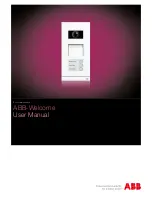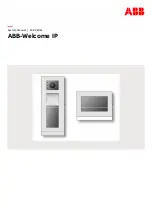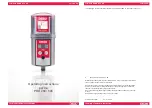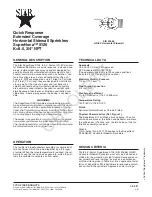
70
User's Guide Digiface AES
© RME
Operational Mode.
Defines TotalMix FX basic operational mode. Choices are
Full Mode
(default,
mixer active, all routing options available), and
Digital Audio Workstation Mode
(straight playback
routing, no input mix). See chapter 28 for details.
Network Remote Settings.
Settings to remote control TotalMix FX by TotalMix Remote via net-
work. See chapter 29.
Store Current state into device.
The unit can store up to 6 setups (the current state) in its own
memory. This function has been developed especially for the stand-alone mode operation, where
there are no playback channels. Therefore using it under Windows, Mac or iOS will result in in-
complete setups.
24.10 Menu Window
Zoom Options 100%, 135%, 200%, 270%.
Depending on the size of the monitor and the current
resolution TotalMix FX might be much too small and the controls too tiny to easily operate them.
Together with the 2 Row mode these options give a lot of different window sizes that suit all
monitors and resolutions currently existing.
Hide Control Strip
. Shifts the Control Strip out of the visible area to gain more space for other
elements.
25. The Matrix
25.1 Overview
The mixer window of TotalMix looks and operates similar to mixing desks, as it is based on a
conventional stereo design. The matrix display presents a different method of assigning and rout-
ing channels, based on a single channel or monaural design. The matrix view of the Digiface AES
has the look and works like a conventional patchbay, adding functionality way beyond comparable
hardware and software solutions. While most patchbays will allow you to connect inputs to outputs
with just the original level (1:1, or 0 dB, as known from mechanical patchbays), TotalMix allows
you to use a freely definable gain value per crosspoint.
Matrix and TotalMix are different ways of displaying the same processes. Because of this both
views are always fully synchronized. Each change in one view is immediately reflected in the
other view as well.
25.2 Elements of the Matrix View
The visual design of the Matrix is determined by the architecture of the Digiface AES system:
Horizontal labels.
All hardware outputs
Vertical labels.
All hardware inputs. Below are all playback channels.
Green 0.0 dB field.
Standard 1:1 routing
Dark grey field with number.
Shows the current
gain value as dB
Blue field.
This routing is muted
Red field.
Phase 180° (inverted)
Dark grey field.
No routing.
Summary of Contents for Digiface AES
Page 7: ...User s Guide Digiface AES RME 7 User s Guide Digiface AES General...
Page 13: ...User s Guide Digiface AES RME 13 5 4 Overview Menu Structure...
Page 15: ...User s Guide Digiface AES RME 15 User s Guide Digiface AES Installation and Operation Windows...
Page 29: ...User s Guide Digiface AES RME 29 User s Guide Digiface AES Installation and Operation Mac OS X...
Page 37: ...User s Guide Digiface AES RME 37 User s Guide Digiface AES Inputs and Outputs...
Page 42: ...42 User s Guide Digiface AES RME...
Page 43: ...User s Guide Digiface AES RME 43 User s Guide Digiface AES Stand Alone Operation...
Page 46: ...46 User s Guide Digiface AES RME...
Page 47: ...User s Guide Digiface AES RME 47 User s Guide Digiface AES TotalMix FX...
Page 49: ...User s Guide Digiface AES RME 49...
Page 82: ...82 User s Guide Digiface AES RME...
Page 83: ...User s Guide Digiface AES RME 83 User s Guide Digiface AES Class Compliant Mode...
Page 89: ...User s Guide Digiface AES RME 89 User s Guide Digiface AES Technical Reference...
Page 98: ...98 User s Guide Digiface AES RME 39 Diagrams 39 1 Block Diagram Digiface AES...
Page 100: ...100 User s Guide Digiface AES RME...
Page 101: ...User s Guide Digiface AES RME 101 User s Guide Digiface AES Miscellaneous...
















































